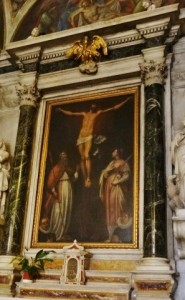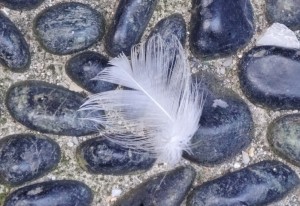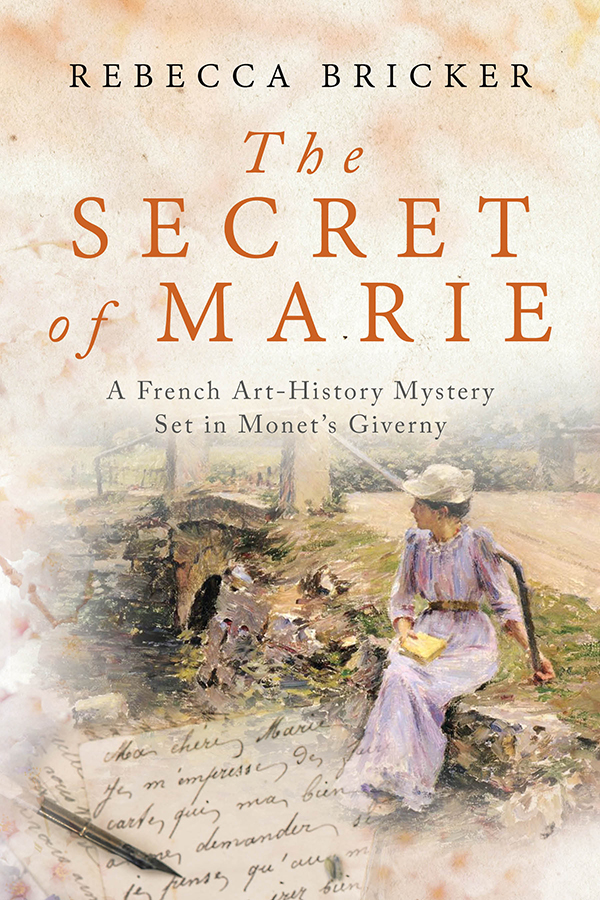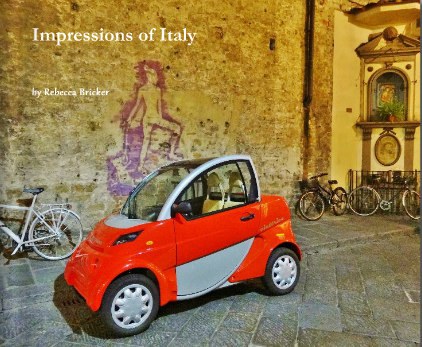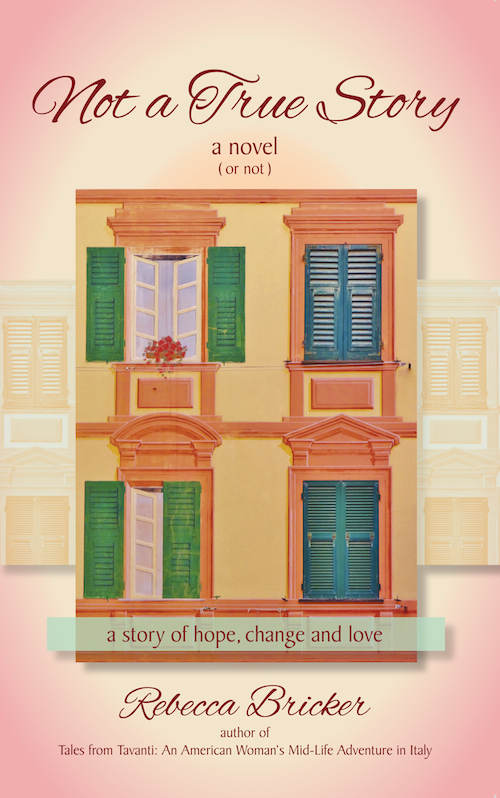 I jumped at the chance to return to the Ligurian fishing village of Camogli recently. The story of my stay there last spring had caught the fancy of my friend Sue, who was visiting from Australia.
I jumped at the chance to return to the Ligurian fishing village of Camogli recently. The story of my stay there last spring had caught the fancy of my friend Sue, who was visiting from Australia.
It was quite a story — full of fishy tales and folklore. A giant sea turtle as big as a car. And a legend of old women who dance on a pebbled piazzetta at midnight.
Sue found a room on Trip Advisor with a sea view. I found a phone number I had scribbled in my journal for a little apartment on the piazzetta. Sometimes, a good story trumps a good view.
 So off Sue and I went to Camogli a few weeks ago. We enjoyed prosecco and the sunset from her terrace… >>>
So off Sue and I went to Camogli a few weeks ago. We enjoyed prosecco and the sunset from her terrace… >>>
But each night, I climbed the narrow stairs from the village promenade to the piazzetta, alone. “You’re very brave,” she said to me one night after dinner. (I generally don’t think of myself as brave, but in this instance I had to agree with her.)
 The apartment itself was lovely. It opened onto the piazzetta, just under the window where the neighborhood Spy smokes a pipe.
The apartment itself was lovely. It opened onto the piazzetta, just under the window where the neighborhood Spy smokes a pipe.
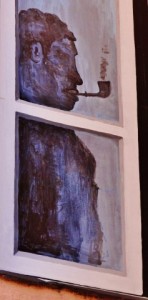 He certainly had seen the women dancing. But he wasn’t too chatty when I asked him for details.
He certainly had seen the women dancing. But he wasn’t too chatty when I asked him for details.
All was quiet the first night. The next morning, I left the door open to let in the fresh sea air. A short while later, I heard a woman at the door, calling, “Romeo! Romeo!”
Romeo was her cat, who had slipped into the apartment and was hiding under my bed.
“Wherefore art thou?” I said to him, kneeling beside the bed.
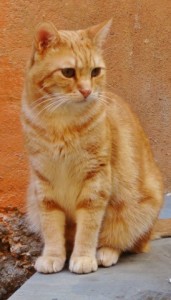 It was the start of what I predict will be a wonderful friendship between me and Romeo’s “mom,” a lovely woman from Finland named Satu, which means “fairy tale” in Finnish.
It was the start of what I predict will be a wonderful friendship between me and Romeo’s “mom,” a lovely woman from Finland named Satu, which means “fairy tale” in Finnish.
I introduced myself and Satu asked, “Are you the writer?”
How word gets around in a small village, I thought. During my May visit had I had met Mario, whose apartment overlooked the piazzetta. Apparently, he had given Satu the link to my blog post and Satu had gone to see local artist Alessandra Puppo (also in my post), who had told me about the dancing women.
 Satu has lived on the piazzetta for 10 years and had heard about this legend. She has spent hours going through books at the local library, trying to learn more. She has asked local residents to tell her the story, but she’s never quite sure if they’re telling her the whole truth — or anything truthful at all — about her pink house on the piazzetta. Even her Italian husband, who himself has sailed the seas, loves to tell her tall tales.
Satu has lived on the piazzetta for 10 years and had heard about this legend. She has spent hours going through books at the local library, trying to learn more. She has asked local residents to tell her the story, but she’s never quite sure if they’re telling her the whole truth — or anything truthful at all — about her pink house on the piazzetta. Even her Italian husband, who himself has sailed the seas, loves to tell her tall tales.
Satu invited me for tea and shared the bounty of her research: The dancing women of the piazzetta were two sisters, who, in fact, had once lived in her house. They were descendents of wealthy merchants originally from Genoa — the Belviso family. According to local lore, the women lived as spinsters until old age — in the 1700s — and their spirits still linger, dancing in the piazzetta at midnight.
Satu sent me to Camogli’s church that sits on Castle Rock, which had been an outlook for invaders and pirates centuries ago. She told me of a crucifixion painting with Saint Catherine that was donated to the church by the Belviso family in the 1500s. The faces of the Signor and Signora Belviso appear in the bottom corners of the painting.
 I felt like I was a character in a Dan Brown novel, tracking down clues of an ancient mystery. The church door was unlocked. As I stepped inside, I was amazed by the dazzling ornate Baroque interior. I thought I was alone as I slowly made my way down a side aisle looking for Saint Catherine and was startled to see the black robe of priest disappear through an open door. I quickly realized that preparations were underway for a funeral when I saw a metal stand at the front of the church that apparently was awaiting the arrival of a casket.
I felt like I was a character in a Dan Brown novel, tracking down clues of an ancient mystery. The church door was unlocked. As I stepped inside, I was amazed by the dazzling ornate Baroque interior. I thought I was alone as I slowly made my way down a side aisle looking for Saint Catherine and was startled to see the black robe of priest disappear through an open door. I quickly realized that preparations were underway for a funeral when I saw a metal stand at the front of the church that apparently was awaiting the arrival of a casket.
Near the door where the priest had disappeared, I discovered the painting. And there in the painting’s lower corners were the ancestors of the dancing women.
After the sisters died, their house became the property of the Catholic church. It was a residence for nuns and may have been used as a hospital, Satu says. Napoleon used the house for his troops — he stationed part of his fleet in Camogli — and probably spent time at the house himself. The house, believed to have been built in the 1200s, is visible in an old etching of the village.
When Satu and her husband bought the house, they had intended to use it as a rental property. “But the house spoke to me,” she said. “I felt there was meant to be a family here.” Her two lovely daughters have grown up in the pink house. “I didn’t want to tell them the story of the dancing women when they were little. I didn’t want to frighten them. But now they know the story of the women’s spirits.”
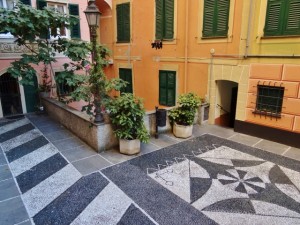 The story of Camogli is as much about the wives, daughters and mothers who lived here as it is the story of its sailors and fishermen. The women’s stories were woven into the nets and sails they mended together during the months and sometimes years their men were at sea. The tales were a blend of truth and fiction, re-told and embellished over time.
The story of Camogli is as much about the wives, daughters and mothers who lived here as it is the story of its sailors and fishermen. The women’s stories were woven into the nets and sails they mended together during the months and sometimes years their men were at sea. The tales were a blend of truth and fiction, re-told and embellished over time.
The pink house on the piazzetta is now full of life — a family (with three lovely women), three cats and a dog. The piazzetta is full of good energy, too. Satu and I — women from foreign lands — have started a dance of our own on this piazzetta, as we pick up the threads of an ancient story.
As I said good-bye to Satu that day, a feather floated down between us. We smiled. A blessing, a sign? A happy day on the piazzetta. 😉
{ 15 comments }
